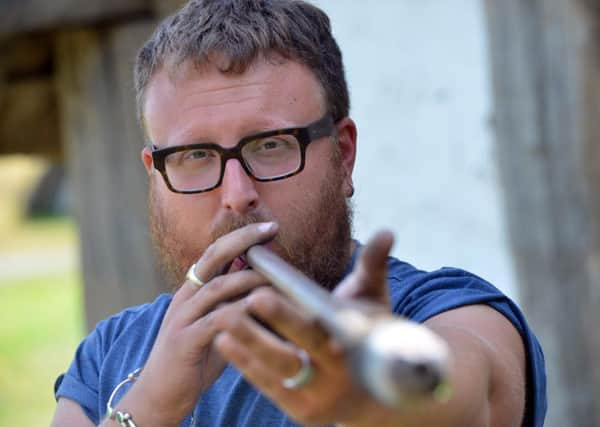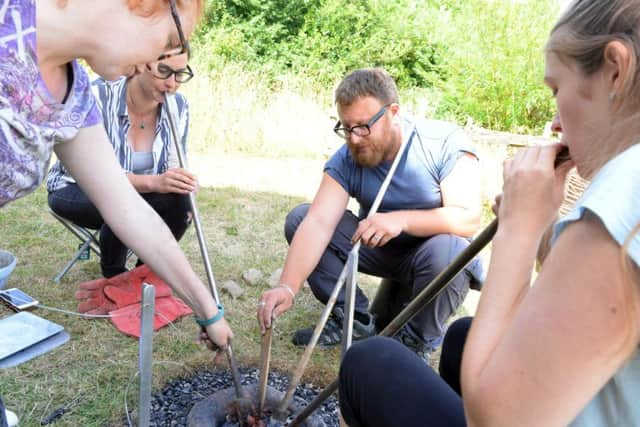PHD students step back in time at Jarrow museum


The experiments are the first in a series of projects by a group of Newcastle University postgraduates to better understand how materials such as copper and glass were made thousands of years ago.
In a collaboration with Jarrow Hall Anglo-Saxon Farm in South Tyneside, the group have been giving demonstrations of copper smelting, based on discoveries made at Pyrgos-Mavroraki, near Limassol in Cyprus - known to date back to around 2,000 B.C.


Advertisement
Hide AdAdvertisement
Hide AdMarco Romeo Pitone, who is leading the research as part of his PhD, said: “The site at Pyrgos-Mavroraki was abandoned around 1,800 B.C. so this is a very early moment for metalworking in Cyprus.
“We still don’t fully understand the specialist techniques these ancient smiths used so the challenge now is to put together the archaeological evidence and try to recreate how it might have been done.
“Our experiments will help us get answers to questions such as how long smelting took, how much copper could be produced, what sort of fuel was needed to get the required temperatures and how many people it might have involved.”
Due to the extraordinary wealth of its ore deposits, Cyprus was a metal powerhouse from the Bronze Age to the late Roman period. Most of the copper traded and used in the Mediterranean during that time is believed to have been sourced from, and smelted on, the island. Excavations over the last decade unearthed plenty of evidence of metallurgical activity in Pyrgos, including several workshops.


Advertisement
Hide AdAdvertisement
Hide AdAs well as re-creating the type of pit furnace found at Pyrgos, the team will also be using replicas of blow-pipes, which use the same type of ceramic nozzles that were discovered during the excavations at the site.
Marco added: “Experimental Archaeology is about replicating ancient technologies and artefacts in order to understand how they worked and what they were used for. Once we have uncovered finds at a site – whether that is finding an artefact through excavation or by using cutting-edge soil analysis techniques to see if there is evidence of industrial activity – we can simulate what we think took place to test different ideas without risking damage to the site or artefacts.
The EXARN team will be giving a free public lecture tomorrow at 3pm also at Jarrow Hall.